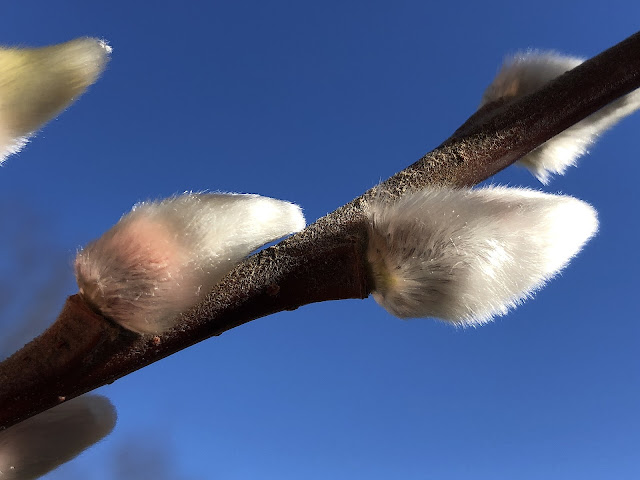Although most of us associate Pussy Willows with the arrival of spring, these delightful shrubs are much more than a seasonal icon. They serve as symbols of growth, renewal, and prosperity—and even hold a prominent place in Lunar New Year celebrations, where they embody the promise of good fortune.
The distinctive fuzzy silver nubs, or catkins, are what make the Pussy Willow so enchanting. Interestingly, the term "catkin" originates from the Dutch word kattenken, meaning kitten—perhaps a nod to their resemblance to the soft fur of a cat's tail. But did you know that birch and beech trees also produce catkins? Beyond their visual appeal, Pussy Willows hold a rich cultural and ecological significance. Willow trees, in general, have been highly valued by Native Americans, fulfilling both practical and medicinal purposes.
 |
The branches of Pussy Willow shrubs have long been prized by indigenous communities. Their flexible branches have been traditionally used by Native American communities to craft a variety of tools and everyday items, such as baskets, nets, ropes, fishing traps, hunting tools, and even snowshoe frames. But the Pussy Willow’s versatility doesn’t stop there. It even played a significant role in cooking! Communities would tie meat or fish to willow stems and roast them over open flames. The bark was also used to clean pitch from bark canoes.
Medicinal Uses - Nature's Aspirin
The genus name Salix comes from Latin and translates to willow, while "discolor" refers to the leaves with different upper and lower colors.
Pussy Willows are wildlife superstars, hosting 289 species of butterflies and moths, such as the Viceroy and Eastern Tiger Swallowtail.
They rely on bees and honeybees for pollination, as their flowers are not wind-pollinated.
Woodpeckers depend on Pussy Willows during winter for food.
Pussy Willows have also been cultivated to feature a variety of dazzling catkin colors—including black, pink, and even rose gold!
Pussy Willows are celebrated worldwide, especially in Polish Easter Monday traditions. These observances are particularly prominent in areas like Buffalo, New York, where they hold strong cultural significance.









